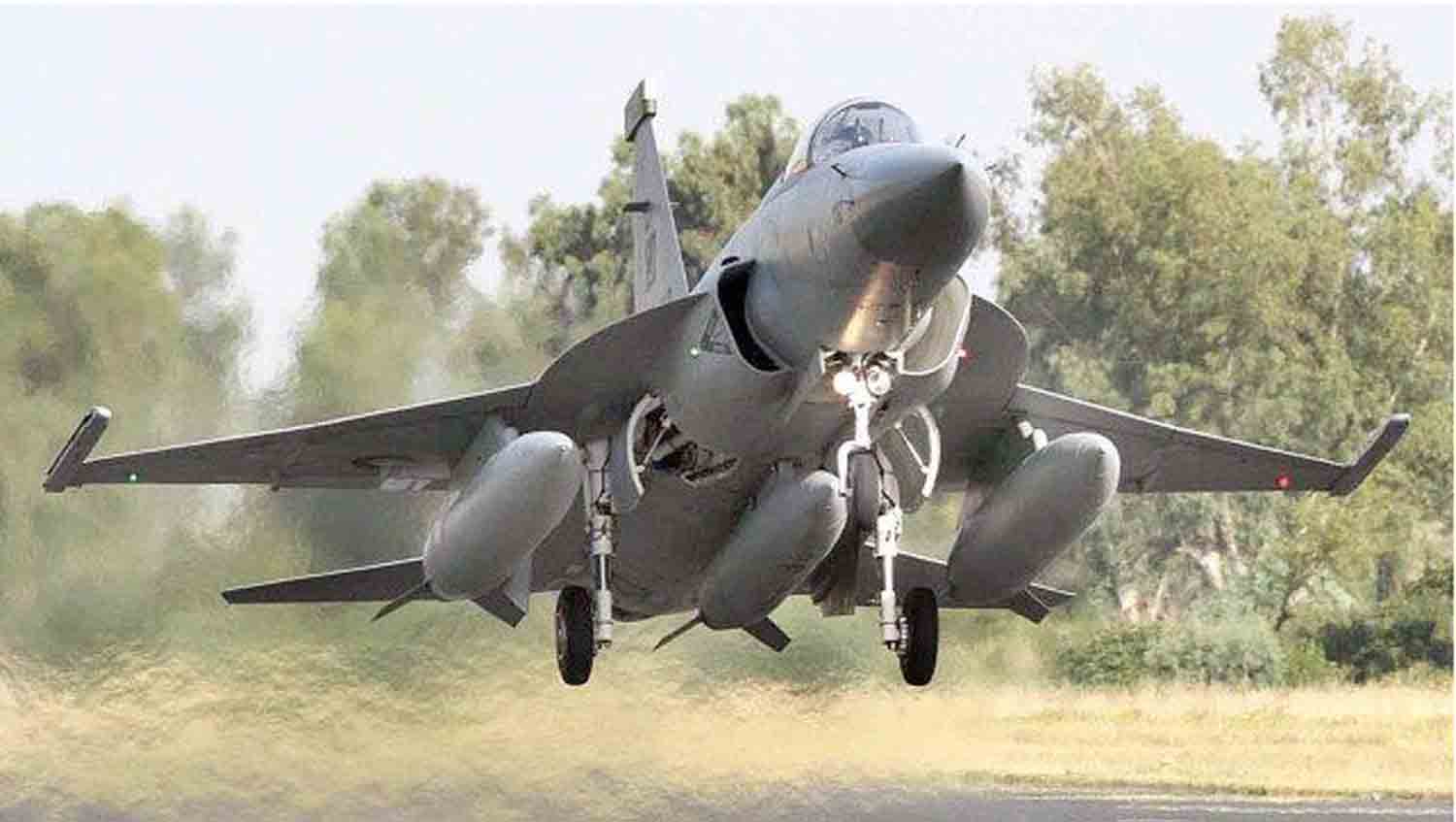In the vibrant atmosphere of the International Defence Exhibition and Seminar 2024 (IDEAS) in Karachi, Pakistan is signaling a significant evolution in its airpower strategy. The National Aerospace Science and Technology Park (NASTP), under the auspices of the Pakistan Air Force (PAF), has launched an ambitious project aimed at modernizing its JF-17 Thunder fleet.
This initiative, known as the “Operational Capability Upgrade” (OCU) and internally referred to as “PFX Alpha,” is not just a simple enhancement; it represents the initial stage of Pakistan’s next-generation fighter program, provisionally named “PFX.”
The JF-17 Thunder, developed in collaboration with China’s Chengdu Aircraft Corporation, has been a cornerstone of Pakistan’s air combat capabilities, symbolizing the nation’s quest for defense industrial independence. With the OCU underway, the aircraft is set for a comprehensive upgrade of its avionics and radar systems.
Insiders suggest that PFX Alpha will facilitate the integration of advanced air-to-air and air-to-surface precision-guided munitions, including indigenous options like the Rasoob 250 glide bomb and the AZB-81LR, a long-range smart weapon designed for deep-strike operations.
Beyond a mere technical enhancement, PFX Alpha signifies a subtle yet impactful strategic shift.
Senior defense analysts in Islamabad view this initiative as a reflection of the PAF’s increasing ambition to take sovereign control over the development of the JF-17, a capability that has historically been constrained by Pakistan’s significant technological dependence on China. Since its introduction, the JF-17 has represented a partnership of geopolitical convenience between the two nations, grounded in shared strategic interests, particularly in counterbalancing Indian airpower.
Despite the narrative of self-sufficiency, the essential subsystems of the aircraft—such as radar, electronic warfare, and weapons integration—have predominantly remained under the control of Chinese companies like the Aviation Industry Corporation of China (AVIC) and the China Electronics Technology Group Corporation (CETC).
AVIC and CETC are among the most influential state-owned defense conglomerates in China, playing pivotal roles in the nation’s aerospace, electronics, and military-industrial sectors. This reliance has become increasingly problematic for Pakistan as it seeks to enhance the JF-17’s capabilities in response to rapidly changing regional threats and to foster indigenous innovation.
The challenges of this interdependence became evident when the Pakistan Air Force (PAF) sought to upgrade the JF-17 with advanced Active Electronically Scanned Array (AESA) radar. Although Pakistan expressed strong interest in Italy’s Leonardo Grifo-E, discussions reportedly fell through due to both AVIC and Leonardo’s reluctance to share proprietary source codes, highlighting the political and technological tensions that often accompany multilateral defense initiatives.
Acknowledging the necessity to bridge this capability gap, the PAF took a significant step in 2020 by setting up a domestic integration facility aimed at managing the fusion of weapons and subsystems for the JF-17. Since then, it has reached important milestones, including the integration of locally produced precision munitions and foreign technologies, such as the ASELPOD targeting pod from Turkey’s ASELSAN and the Ra’ad air-launched cruise missile (ALCM), which is a crucial component of Pakistan’s strategic deterrent strategy.
The PFX Alpha initiative is set to enhance the indigenization efforts by integrating locally developed radar systems, electronic warfare capabilities, and advanced avionics, along with the potential addition of electro-optical/infrared (EO/IR) targeting systems. This progression aims to elevate the aircraft to meet modern fourth-plus generation standards.
These upgrades could provide the JF-17 with improved survivability in complex air defense scenarios and greater versatility across multiple domains, enabling precision strikes in contested areas and intelligence, surveillance, and reconnaissance (ISR) operations in asymmetric conflict zones such as Balochistan and along the Line of Control (LoC).
From a geopolitical perspective, this initiative emerges during a significant shift in the regional airpower landscape. As India continues to incorporate Rafale multirole fighters and advance its indigenous Tejas Mk1A and AMCA programs, Pakistan must adapt its strategy for air superiority. In this light, PFX Alpha represents not just an enhancement of capabilities but a strategic imperative.
Ultimately, Pakistan’s pursuit of greater autonomy in its aerial operations through the JF-17 OCU signifies a broader shift aimed at minimizing reliance on foreign supplies, enhancing system integration flexibility, and nurturing a sustainable domestic military-industrial base. While the success of PFX Alpha in transforming the JF-17 into a genuinely independent airpower platform remains uncertain, the objective is clear: Pakistan is forging its own path in the aerospace defense sector.
Discover more from Defence Talks | Defense News Hub, Military Updates, Security Insights
Subscribe to get the latest posts sent to your email.





